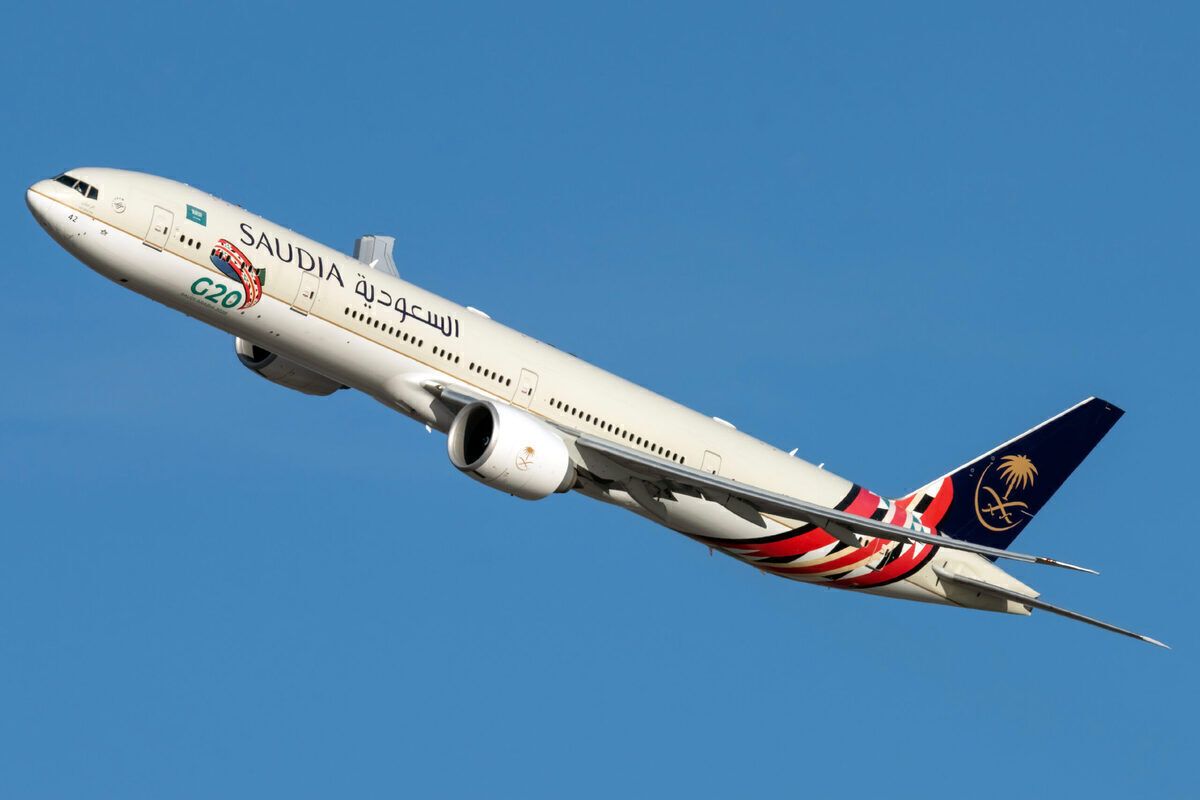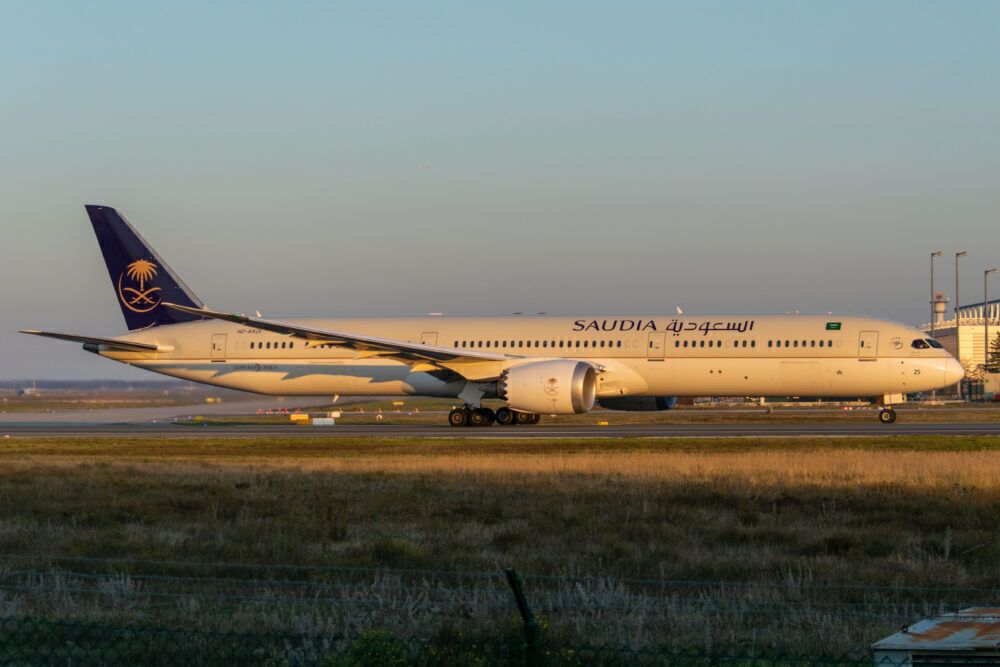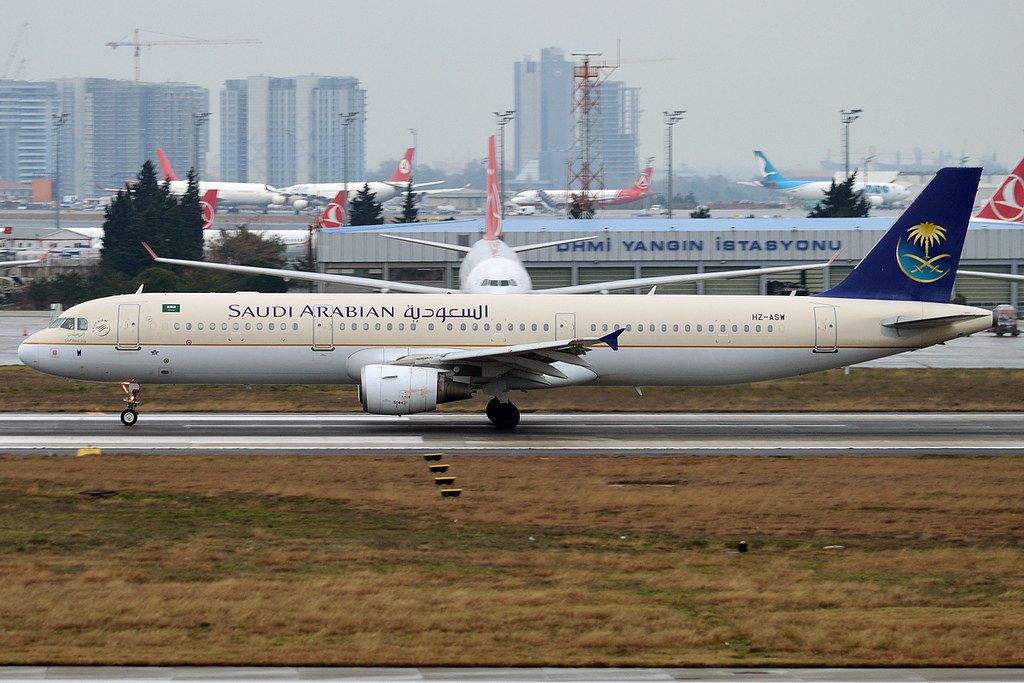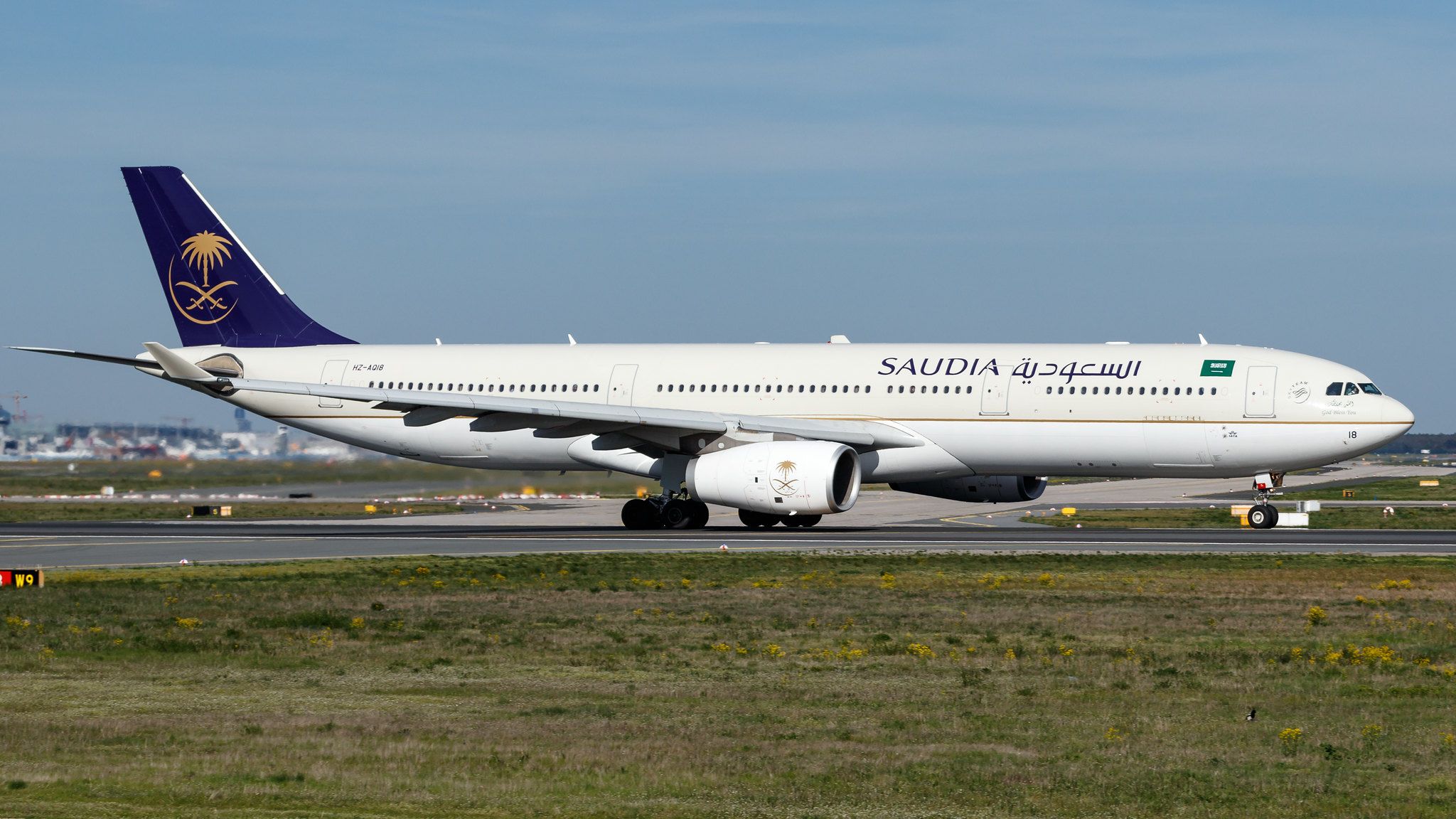Flying out of hubs in Dammam, Jeddah, and Riyadh, Saudia boasts an impressive fleet of more than 150 aircraft. The airline, which joined the SkyTeam alliance in May 2012, operates designs from the Airbus A320 family, as well as Boeing and Airbus widebodies. Let's take a closer look at its exact makeup.
Airbus narrowbodies
According to data from ch-aviation.com, Saudia's current fleet comprises a total of 158 aircraft. Of these, 61 are planes from Airbus's single-aisle A320 family. The carrier, which previously operated as Saudi Arabian Airlines, flies both the A320-200 and A321-200 models, of which the former is the most numerous design.
Indeed, the Saudi Arabian flag carrier presently operates a total of 46 standard A320s, which have an average age of 7.1 years old. This is somewhat lower than the average for its fleet as a whole, which clocks in at 11.6 years old. Of Saudia's 46 A320s, 42 are currently active. According to SeatGuru, they have either 116 (20 business and 96 economy) or 132 (12+120) seats.
At the larger and slightly older end of the spectrum, Saudia also flies 15 A321s with an average age of 10.5 years old. These twinjets seat 165 passengers across two classes, and 12 of the 15 (80%) are presently listed as being active. Going forward, Saudia is set to receive the A321neo (20 jets) and A321XLR (15 jets), which will allow the national airline to modernize its single-aisle fleet.
Stay informed: Sign up for our daily and weekly aviation news digests?
Boeing widebodies
When it comes to widebody aircraft, Boeing is the dominant manufacturer at Saudia. The Boeing 777 is very popular at the airline, which flies both passenger and cargo-carrying models. Indeed, 35 examples of the 777-300ER are accompanied by four examples of the 777-200 Freighter. The 777-300ER is the only present Saudia aircraft with a first class cabin, featuring 24 flatbeds.
Saudia's 777-300ERs are relatively young, with an average age of just 7.3 years old. However, the carrier flies even more modern Boeing widebodies in the form of the 787 'Dreamliner' family. Saudia operates both the standard 787-9 and the stretched 787-10 variants of the US manufacturer's next-generation widebody.
Of these, the 787-9 is the more numerous design, with 13 examples, compared to five (plus two on order) for the 787-10. Saudia even flies the 747-400, with three of these legendary quadjets carrying airfreight for the company. Ch-aviation also lists three passenger 747-400s as currently flying for Saudia, with these Queens of the skies reportedly doing so on lease from Air Atlanta Europe.
The airline industry is always full of new developments! What aviation news will you check out next?
Airbus widebodies
Airbus also has a presence in Saudia's widebody fleet in the form of its A330 family. The airline flies 34 examples of the European manufacturer's A330-300 model, with two different cabin configurations to suit a variety of uses. Indeed, according to data made available by ch-aviation, 20 of these twinjets are examples of the high-density A330-300 Regional, which seats 330 passengers.
These widebodies are just 5.5 years old on average. Meanwhile, Saudia's 14 standard Airbus A330-300s are almost twice as old, with an average age of 10.4 years. According to data from SeatGuru, these aircraft seat either 288 or 298 passengers. These layouts have a 36-seat business class cabin at the front, with either 252 or 262 economy class seats behind them.
What do you make of Saudia's present fleet? Have you ever flown with SkyTeam's largest Middle Eastern airline? Let us know your thoughts and experiences in the comments.




